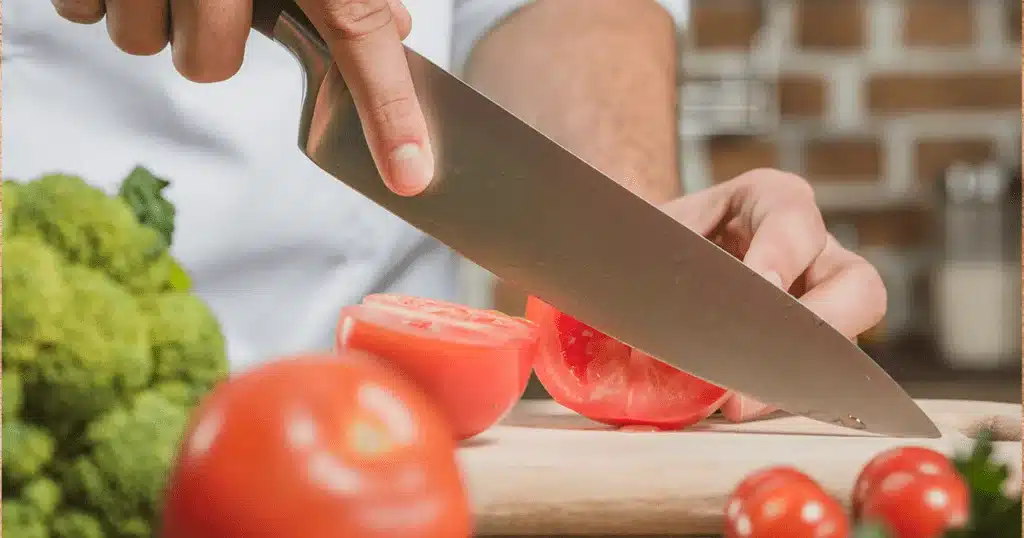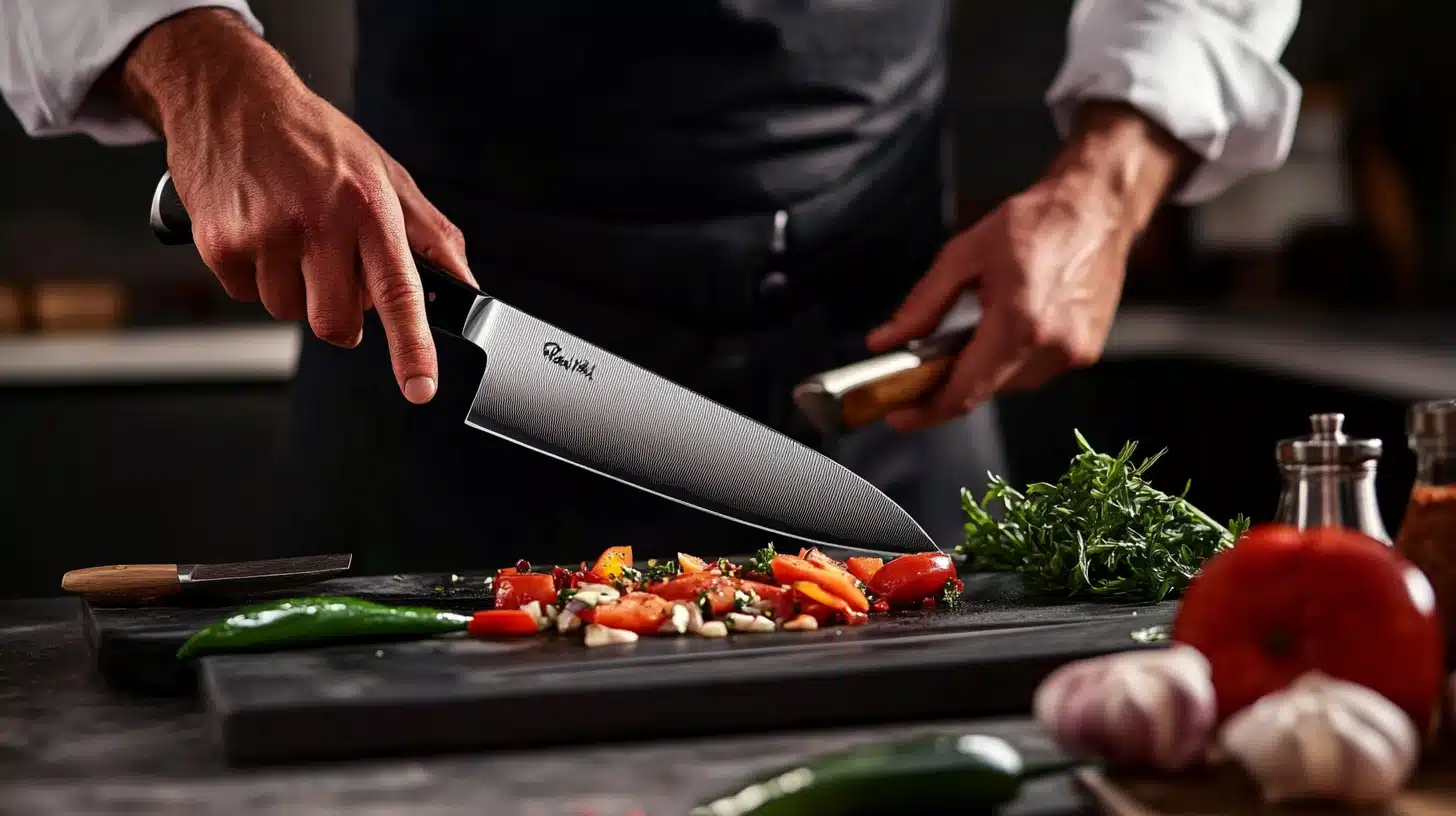The knife is one of the most fundamental and indispensable tools in any chef’s kitchen. Whether you’re a professional chef or a home cook, using knives for food preparation is not only a necessity but an art form. Knives come in a variety of shapes, sizes, and designs, each serving a specific purpose in the kitchen.
From slicing and dicing to chopping and filleting, knives are crucial for creating the perfect texture, appearance, and flavor of a dish. In this article, we’ll explore why chefs use available knife store in the kitchen for preparing food, the importance of different types of knives, and how the right tools can elevate the cooking process to new heights of precision and efficiency.
Precision and Control

One of the primary reasons chefs rely on knives is the precision and control they offer during food preparation. A sharp knife allows chefs to make clean, accurate cuts, ensuring that ingredients are uniformly sliced or diced. This precision is particularly important in professional kitchens where presentation and consistency are key.
For example, when cutting vegetables, evenly sized pieces ensure that they cook uniformly, resulting in better texture and taste. In more german steel knife refined dishes, precise knife cuts, such as julienne or chiffonade, are used to enhance the appearance and flavor profile of the dish. The ability to control the size and shape of ingredients ultimately allows chefs to maintain consistency in both taste and presentation.
Efficiency and Speed
Time is a critical factor in any kitchen, especially in busy restaurants where speed is of the essence. Chefs use knives to quickly and efficiently prepare ingredients, allowing them to move seamlessly from one task to another. A well-sharpened knife reduces the effort required to cut through ingredients, making the cooking process faster and less tiring.
For instance, chopping herbs with a chef’s knife can take just a few seconds compared to using a less efficient tool. Similarly, deboning a fish or slicing through meat with the right knife minimizes the time spent on food preparation, enabling chefs to focus on other aspects of cooking, such as seasoning or plating.
Versatility of Different Knife Types
Chefs use a variety of knives, each designed for a specific purpose. This diversity allows them to tackle different ingredients and cooking techniques with ease. This is the most versatile knife in the kitchen and a favorite among chefs.
With a broad blade that tapers to a point, a chef’s knife can be used for chopping, slicing, dicing, and mincing a wide range of ingredients, from vegetables to meat. A small knife with a narrow blade, the paring knife is perfect for delicate tasks that require precision, such as peeling fruits and vegetables, trimming fat, or deveining shrimp.
Enhancing Flavor and Texture

The way ingredients are cut has a direct impact on their flavor and texture. Chefs understand this, and that’s why they use different knives and cutting techniques to bring out the best in their ingredients.
For instance, finely chopping garlic with a chef’s knife releases more oils, enhancing the flavor in a dish. On the other hand, cutting vegetables into larger chunks can prevent them from overcooking and losing their natural flavor and crunch.
The texture of the food is also influenced by how it is cut. A clean, precise cut will keep the structure of the food intact, leading to a better mouthfeel. For example, perfectly sliced meat will retain its juiciness and tenderness, while poorly cut meat might become tough and unevenly cooked.
Chefs use their knives with great care to ensure that the food not only looks good but also tastes and feels just right when eaten.
Knife Skills as an Art Form
For many chefs, using a knife is more than just a practical task—it’s an art form. Mastering knife skills takes years of practice and can be a point of pride for professional chefs. The way a chef handles a knife reflects their expertise and confidence in the kitchen.
Knife techniques like dicing, chiffonading, and filleting require precision and skill, and when done correctly, they elevate the presentation of the food.
Watching a skilled chef at work is like watching an artist create a masterpiece. The speed, fluidity, and grace with which they slice, dice, and chop ingredients can be mesmerizing and is a testament to their experience and dedication to the craft.
Hygiene and Food Safety
Proper knife use also plays a critical role in maintaining hygiene and food safety in the kitchen. Using knives for specific tasks helps prevent cross-contamination between different ingredients.
For example, chefs often use separate knives or thoroughly clean their knives when switching between raw meat and vegetables. This practice reduces the risk of spreading harmful bacteria, ensuring that food is safe to eat.
Additionally, a well-maintained knife, kept sharp and clean, is less likely to slip and cause accidents. Dull knives can be more dangerous than sharp ones because they require more force to cut, increasing the likelihood of slipping and injuring the user. Chefs prioritize knife maintenance, including sharpening and cleaning, to ensure both efficiency and safety in the kitchen.
Tradition and Culinary Heritage
The use of knives in food preparation is deeply rooted in culinary traditions across cultures. In many cuisines, specific knives have been developed over centuries to suit the local ingredients and cooking methods.
For example, the Japanese sushi knife, or yanagiba, is designed to slice fish with extreme precision, while the Chinese cleaver is versatile enough to chop meat, vegetables, and even bones.
Chefs who respect and uphold these traditions use knives not only for their functionality but also as a way to connect with the history and heritage of their cuisine. The craftsmanship of high-quality knives, often passed down through generations, is a symbol of culinary mastery.

